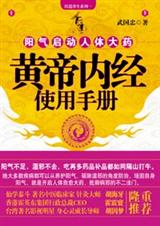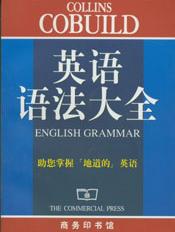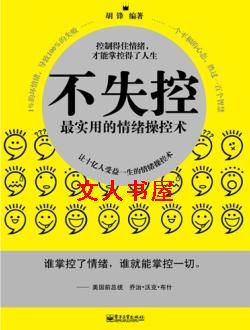牛津实用英语语法-第50章
按键盘上方向键 ← 或 → 可快速上下翻页,按键盘上的 Enter 键可回到本书目录页,按键盘上方向键 ↑ 可回到本页顶部!
————未阅读完?加入书签已便下次继续阅读!
从17岁就当兵,并且还计划在军队里呆到30岁。
Ann had lived in a cottage for sixty years/ever since she was born,andhad no wish to move to a tower block.
安在小屋里已经住了60年/安出生以来就一直住在小屋,也不想搬到塔楼去住。(这里也可以用过去完成进行时形式 had beeniiving。)
(b)The old oak tree,which had stood in the churchyard for300 years/since before the church was built,suddenly crashed to the ground.
屹立在教堂墓地上已300百年之久的老橡树/在教堂建造之前就屹立着的老橡树突然间哗啦一声巨响倒在地上。(这里也可以用过去完成进行时形式 had been standing。)
Peter,who had waited for an hour/since ten o’clock,was very angrywith his sister when she eventually turned up.
彼得等了一小时/从10点钟起就等着,他妹妹终于来到时他非常生气。(也可以用had been waiting。)
(c)He had served in the army for ten years;then he retired and married.
His children were now at school.
他在军队里服役十年,后来退伍并结了婚。他的孩子现在已上学了。
这里既不能用since也不能用过去完成进行时。还要注意到,这里的过去完成时没有与之相当的现在完成时。如果把句中最后一个动词变成现在时,其他动词时态都要变成一般过去时。
He served in the army for ten years;then retired and married.
His chil-dren are now at school.
他在军队里服役十年,然后退伍并结了婚。他的孩子现在都在上学。这些结构以图解形式分别表示如下,直线AB表示过去完成时的动作,TS表示过去说话的某一时刻:
{ewc MVIMAGE;MVIMAGE; !461350T1。bmp}
(另参见第196节关于间接引语中过去完成时的用法。)
3 过去完成时也是一般过去时的过去时,用来表示叙述者或主语在过去的某一时刻回顾更早的动作:
Tom was 23 when our story begins.His father had died five years beforeand since then Tom had lived alone.His father had advised him not to getmarried till he was 35,and Tom intended to follow this advice.
我们的故事开始时汤姆23岁。他父亲五年以前就已去世,打那以后汤姆一直独自生活。他父亲劝告过他不到35岁不要结婚,汤姆打算遵从这个忠言。
I had just poured myself a glass of beer when the phone rang.When Icame back form answering it the glass was empty.Somebody had drunkthe beer or thrown it away.
我刚刚给自己倒了一杯啤酒,电话铃就响了。我接电话回来时,啤酒杯空了。一定有人喝掉了啤酒或者把它泼掉了。
He met her in Paris in 1977.He had last seen her ten years before.Herhair had been grey then;now it was white.
1977年他在巴黎遇见了她。他上一次见到她是十年之前。那时她的头发是灰白的,这时已经全白了。
He met her in 1967 and again ten years later.Her hair,which had beengrey at their first meeting,was now white
他1967年见到过她,十年以后又见到了她。她的头发在他们第一次见面时还是灰白的,这时已经全白了。
但是如果只是依次叙述先后发生的事件,就不需要用过去完成时:
Tom’s father died when Tom was eighteen.Before he died he advisedTom not to marry till he was 35,and Tom at 23 still intended to followthis advice.
汤姆的父亲在汤姆18岁那一年去世了。在他去世之前,他劝告汤姆要到35岁再结婚。汤姆到了23岁仍然打算遵从父亲的忠言。
He met her first in 1967 when her hair was grey.He met her again in1977./He didn’t meet her again till 1977.Her hair was now white.
1967年他第一次遇见她,那时她的头发是灰白色。1977年他再次遇见她。/直到1977年才再次遇见她。这时她的头发全白了。
上述两个例句中,都没有从过去某时刻去回顾过去,因此就没有理由用过去完成时。
注意以下例句含义上的区别:
She heard voices and realized that there were three people in the nextroom.
她听到了说话的声音,知道隔壁房间里有三个人。
She saw empty glasses and cups and realized that three people had been inthe room.
她看到了空玻璃杯子和茶杯,知道房间里曾来过三个人。(他们已经不在那里了。)
He arrived at 2∶30 and was told to wait in the VIP lounge.
他在两点半到达并被告知在贵宾休息室等候。
He arrived at 2∶30.He had been told to wait in the VIP lounge.
他在两点半到达。来之前已被告知在贵宾休息室等候。
在倒数第二句中,他在抵达后才接到指示;在最后一句中,他
是在抵达之前就接到指示的,可能在出发之前就已接到。
?
'Amber demo'
195 时间从句中的一般过去时与过去完成时
?
A 由when连接的从句
一个过去的动作紧接另一动作时:
He called her a liar.
他骂她撒谎。
She smacked his face.
她打了他一个耳光。
可以用when把这两个一般过去时的句子连接起来。连接的条件是,从意思上可以明显看出后一动作跟随前一动作,二者并不是同时发生的:
When he called her a liar she smacked his face.
他骂她撒谎时,她打了他一个耳光。
两个过去时这样用时,通常存在这样的概念:第一个动作导致第二个动作,而后者是紧接前者发生的:
When he opened the window the bird flew out.
他一打开窗户鸟就飞出去了。
When the play ended the audience went home.
剧结束后,观众就回家了。
When he died he was given a state funeral.
他去世后,为他举行了国葬。
过去完成时用于when之后,是为了避免使用两个一般过去时可能给人造成两个动作同时发生的印象:
When he had shut the window we opened the door of the cage.
他关了窗户之后,我们把笼门打开了。(我们等他关紧了窗户才打开笼门。)
When she had sung her song she sat down.
她唱完歌之后坐了下来。(如写成 When she sang her song she satdown,可能造成她是坐着唱歌的印象。)
When he had seen all the pictures he said he was ready to leave.
他看了所有的画之后说他要走了。(在他看完画之后……)试和下句相比较:
When he saw all the pictures he expressed amazement that one manshould have painted so many.
他看见所有的画时,表示十分惊奇,一个人竟然画了这么多画。(他一看见画就这么说。)
过去完成时同样可以与as soon as,the moment,immediately连用。(关于as作为表示时间的连词的用法,参见第332节。)
B 过去完成时可以与till/until和before连用,强调一个动作结束或预期将结束,但要注意在till/until+过去完成时+一般过去时结构中,表示一般过去时的动作可以位于表示过去完成时的动作之前,而在before+过去完成时+一般过去时结构中表示一般过去时的动作总是位于表示过去完成时的动作之前:
He refused to go till he had seen all the pictures.
他在看完所有的画之后才同意走。
He did not wait till we had finished our meal.
他没等到我们吃完饭就走了。
Before we had finished our meal he ordered us back to work.
没等我们吃完饭,他就命令我们回去干活。
Before we had walked ten miles he plained of sore feet.
我们还没走出十英里路,他就抱怨脚痛了。
也可以在表示时间的从句中和主句中都用过去完成时:
It was a very expensive town.Before we had been here a week we hadspent all our money.
那是一个物价很贵的地方。我们到这儿还不到一星期,就花光了所有的钱。
C 在after之后一般用过去完成时态:
After the will had been read there were angry exclamations.
遗嘱宣读完之后,激起了一片愤怒的喊声。
D 第194节中已经讲过,在过去某一时刻回顾更为过去的动作时,要用过去完成时。如果有两个这样的动作:He had beento school but he had learnt nothing there,so was now illiterate(他上过学但什么也没学到,因此现在还是个文盲),而又想用时间连词把它们连接起来,就可以用when等连词连接两个过去完成时:
When he had been at school he had learnt nothing,so he was now illiter-ate.
他上学的时候什么也没学到,所以现在还是个文盲。
但更常见的情况是,这里时间从句中的动词用一般过去时:
When he was at school he had learnt nothing,
(译文同上。)
类似的例句还有:
He had stayed in his father’s firm till his father died.Then he had startedhis own business and was now a very successful man.
他在父亲的公司里一直呆到父亲去世。之后他便自己开业,其时已成为一个事业有成的商人。
E 表示认识、理解等的动词一般在时间从句中不用过去完成时,除非有时间修饰:
When she had known me for a year she invited me to tea.
她






